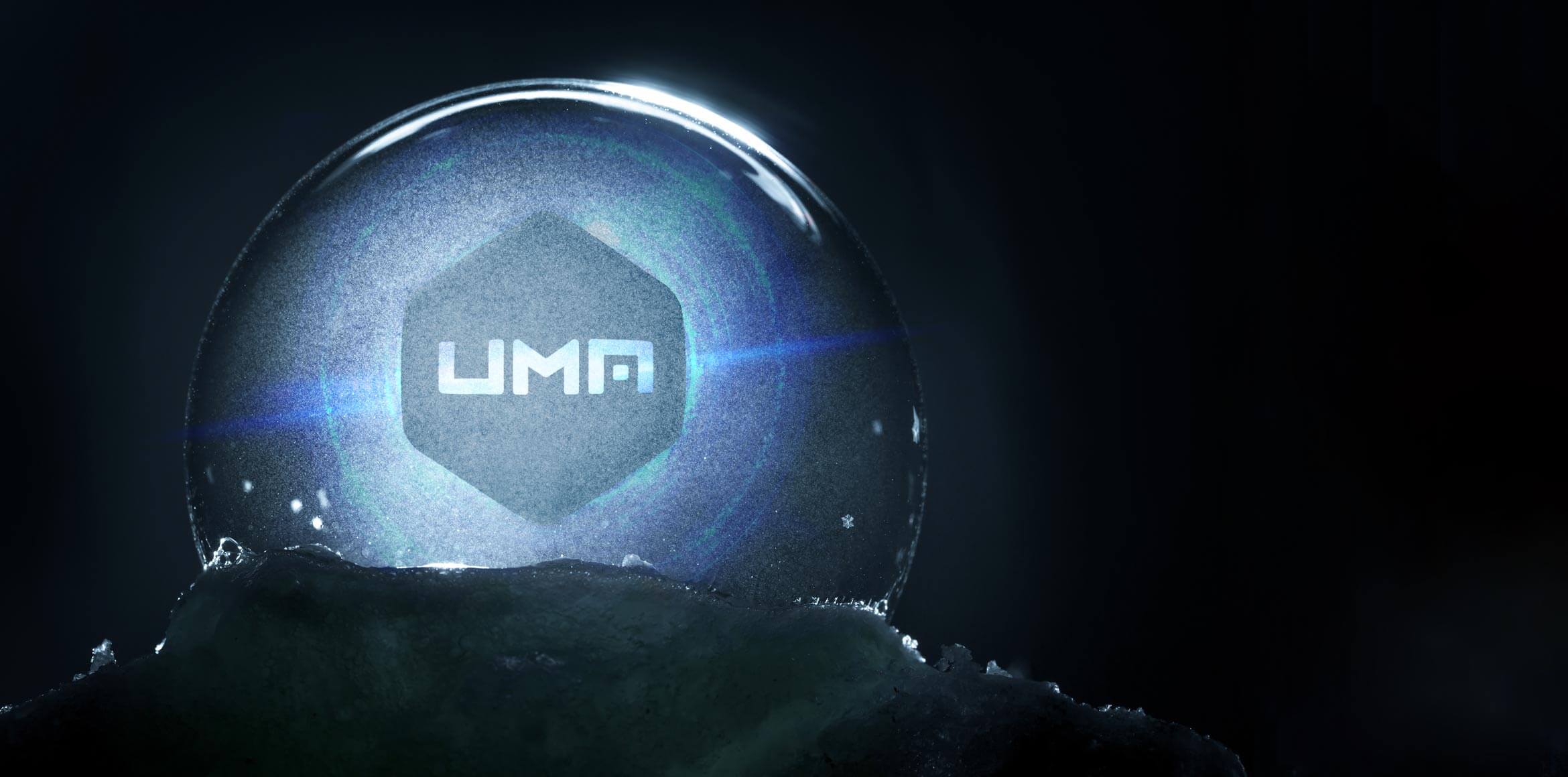Ever heard of the term “Derivatives”? They are essentially an asset type that tracks the price of any popular underlying asset. For example, silver derivatives accurately track the real price of silver. When you trade derivatives, you bet on the silver price without actually owning it.
The global derivatives market is bigger than you can imagine. Unfortunately, retail investors don’t have access to most lucrative derivatives that are instead only available to institutional investors who are part of large institutions like banks. These institutions create, administer and enforce contracts that enable existing derivatives.
Various regulations are implemented to determine who can trade in the derivatives market. For example, many derivatives can only be traded in certain jurisdictions. Universal Market Access, a relatively new blockchain protocol, aims to solve this problem by making derivatives available to retail traders worldwide.
How much is UMA Coin?
According to current crypto money market data, 1 UMA Coin 78.19 TL is traded for TL. UMA Coin price has fluctuated between -4.18% in the last 24 hours. The trading volume of UMA Coin in the last 24 hours is 38,377,191 $ and its total market cap is 346,564,245 $ dollars.
How much is UMA Coin?
According to current crypto money market data, 1 UMA Coin is trading at 5.24 $ dollars.
What is Universal Market Access (UMA) Coin?
Founded by Hart Lambur and Allison Lu in Q4 2018, the UMA protocol enables users to create decentralized financial protocols. Using UMA’s infrastructure, developers can create and manage their own derivatives and other DeFi products on the Ethereum network. The protocol offers customizable contract templates that allow developers to create a derivative for almost any asset, even assets that everyday traders cannot access.
As the name of the protocol suggests, the purpose of UMA is to make derivatives public. Unlike traditional derivatives, contracts created in the UMA protocol are self-administered. This means that they do not require the intervention of expensive legal sanctions from the courts and lawyers. UMA protocol allows investors to participate in the global derivatives market, regardless of their financial standing, background or jurisdiction, using blockchain technology and smart contracts.
What is UMA Coin?
UMA is the governance-utility token of the Universal Market Access project. This token plays a crucial role in the functioning of the UMA protocol and has many use cases in its ecosystem. As a UMA owner, you have the right to participate in the management of the protocol.
How Does Universal Market Access (UMA) Work?
As a crypto trader, you can access the UMA protocol to buy or sell various derivatives created on the platform. First, the project requires you to provide some type of crypto collateral such as BTC, ETH or stablecoins within the platform. This collateral is then locked in a smart contract on the UMA protocol, after which you receive corresponding synthetic tokens in return.
Synthetic tokens are designed to track any reliable and valid piece of data eg the value of a particular stock, currency or any other cryptocurrency. You can then trade these synthetic assets like any other asset. The actual value of the synthetic assets you create depends on the collateral value of your deposits in the UMA protocol.
It is very important to maintain the value of your collateral once you have created the derivative you want. You may need to add more margin (to protect your position) as a hedge against the fall in value of your margin. You may be wondering: How does the smart contract in the UMA protocol know the value of my collateral? Most DeFi platforms address this question, commonly known as the Oracle Problem, by constantly monitoring the price of the underlying asset using price predictions. Unfortunately, this solution is not ideal.
A common complaint when using price predictions is the network congestion they cause. These seers charge a fee to constantly monitor the price of the underlying asset and tend to stop working during periods of high network activity. The UMA protocol prevents oracles from being used for price tracking as they consume large amounts of network resources. Instead, the responsibility falls to the investor to provide sufficient collateral to protect your position.
Participants in the UMA protocol are known as “liquidators”. Liquidators monitor all positions in the UMA protocol using their own price streams, ensuring that each investor has sufficient collateral to back the synthetic tokens they create. If the liquidator finds a position that does not have sufficient collateral to back him up, he can liquidate the position by repaying the debt and claiming the collateral himself.

What is UMA Used For? Holders of
UMA token can participate in the management of the network. They vote on various project proposals and contribute to the security of the protocol. As a UMA token holder, you have the right to vote on various improvement proposals for the protocol, such as new project features and contract types that can be included in the platform.
Owners can also help resolve asset pricing disputes that arise during liquidation. By honestly and accurately participating in the UMA governance process, token holders are eligible for UMA tokens as a reward. Decisions regarding the UMA protocol are governed by governance and are managed only by UMA token holders.
Key Features of Universal Market Access (UMA) Protocol
Synthetic Asset Generation
As stated, synthetic assets are It is designed to monitor the prices of any underlying asset such as stocks, commodities or crypto. These assets allow investors to gain price exposure to various important assets without actually acquiring them. As long as the underlying asset’s price information is reliable and publicly available, developers can create a synthetic asset using the UMA protocol.
The best part is that synthetic markers can be created to track any data format. For example, you can create a synthetic token that tracks the price of Ethereum Gas fees or the market value of DOGE. These tokens, like cryptos, have a specific store of value and are permissionless, accessible and decentralized.
Management Awards
As discussed earlier, liquidators can seek an investor’s security by liquidating their positions and paying off the debt themselves. However, those who think that the position should not be liquidated may come into conflict within a certain period of time. Next, the network participants (debaters) check the validity of the liquidation by referencing their own price streams.
To resolve this dispute, UMA token holders are asked to vote on what they believe the price of the asset is to be. On the basis of inputs, conflicts are resolved within the network. Token holders receive rewards for their participation. This process prevents various other problems that typically occur in networks such as UMA protocols such as Oracle manipulations and flash credit attacks.
Smart Contract Templates
Developers can access a number of audited, open source smart contract templates on the UMA platform. These templates help developers create robust synthetic tokens without worrying about architectural difficulties.
Universal Market Access (UMA) Pros and Cons
Pros
- Validators and liquidators in the UMA protocol manages contracts. This process is cost-effective as it eliminates the need for expensive litigation fees spent on agents.
- The UMA protocol solves network congestion problems by avoiding the use of oracles to report prices.
- The UMA protocol gives developers the freedom to create tokens that can track any metric with valid data.
- UMA’s platform offers high earning potential. You can employ a liquidator or disputant for the UMA protocol to monitor positions in the network. By correctly identifying an invalid dispute or a contract that needs to be liquidated, you will receive rewards in the form of UMA tokens.
Cons
- The UMA protocol is finding itself in a highly competitive field, among many other projects.
- They need to be at the top of their game to establish themselves as a market leader among protocols that enable the creation of synthetic assets.
- Currently, only 62% of UMA’s total supply is available for trading.
UMA Coin Review and Future 2022
UMA token recorded exponential growth earlier this year. The price, which started at $7 in January, recorded a brand new ATH and surged above $33. However, the price has since corrected itself and is currently trading at $5.99 per UMA token. Experts are of the opinion that this token has a promising future, provided the UMA protocol can fend off future competition.
The UMA protocol allows the average trader to access some of the most lucrative derivatives in the world. Many community products already exist in the UMA ecosystem, and many more are in development. Users do not need a financial background or deep pockets to access these tools. Today, all you need is a smartphone and internet access to start trading crypto derivatives and join the global derivatives market with the help of the UMA platform.





